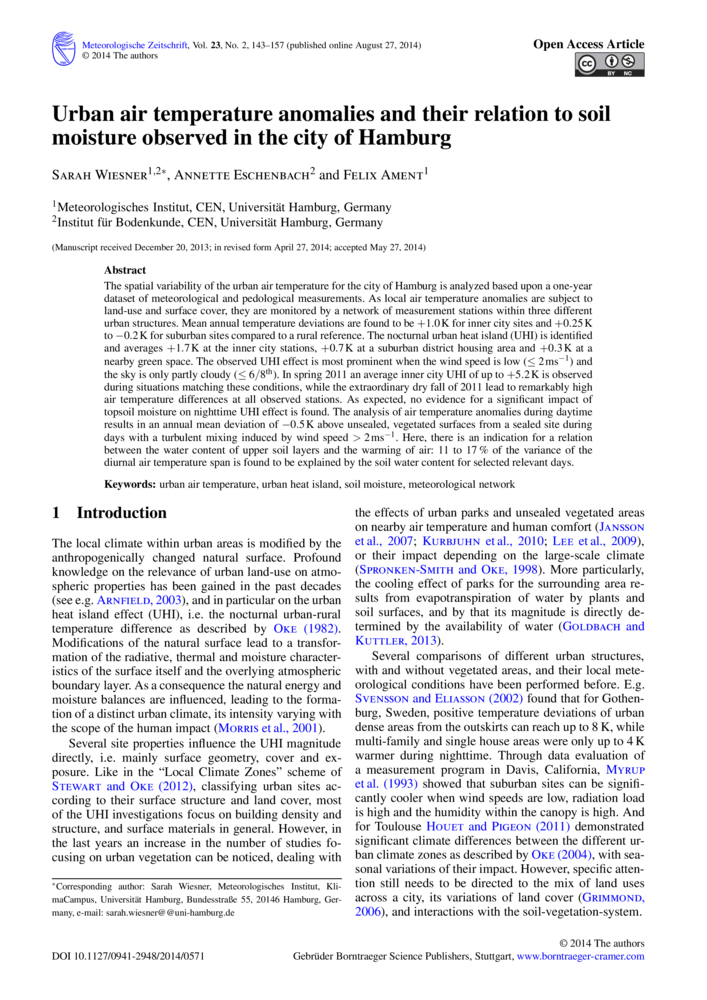Beitrag
Urban air temperature anomalies and their relation to soil moisture observed in the city of Hamburg
Wiesner, Sarah; Eschenbach, Annette; Ament, Felix

Meteorologische Zeitschrift Vol. 23 No. 2 (2014), p. 143 - 157
41 Literaturangaben
veröffentlicht: Sep 1, 2014
Online veröffentlicht: Aug 27, 2014
Manuskript akzeptiert: May 27, 2014
Manuskript-Revision erhalten: Apr 27, 2014
Manuskript-Revision angefordert: Jan 21, 2014
Manuskript erhalten: Dec 20, 2013
DOI: 10.1127/0941-2948/2014/0571
Open Access (Arbeit kann kostenlos heruntergeladen werden)
Abstract
The spatial variability of the urban air temperature for the city of Hamburg is analyzed based upon a one-year dataset of meteorological and pedological measurements. As local air temperature anomalies are subject to land-use and surface cover, they are monitored by a network of measurement stations within three different urban structures. Mean annual temperature deviations are found to be + 1.0K for inner city sites and + 0.25K to - 0.2K for suburban sites compared to a rural reference. The nocturnal urban heat island (UHI) is identified and averages + 1.7K at the inner city stations, + 0.7K at a suburban district housing area and + 0.3K at a nearby green space. The observed UHI effect is most prominent when the wind speed is low (≤ 2ms-1) and the sky is only partly cloudy (≤ 6∕8th). In spring 2011 an average inner city UHI of up to + 5.2K is observed during situations matching these conditions, while the extraordinary dry fall of 2011 lead to remarkably high air temperature differences at all observed stations. As expected, no evidence for a significant impact of topsoil moisture on nighttime UHI effect is found. The analysis of air temperature anomalies during daytime results in an annual mean deviation of - 0.5K above unsealed, vegetated surfaces from a sealed site during days with a turbulent mixing induced by wind speed > 2ms-1. Here, there is an indication for a relation between the water content of upper soil layers and the warming of air: 11 to 17 % of the variance of the diurnal air temperature span is found to be explained by the soil water content for selected relevant days.
Schlagworte
urban air temperature • urban heat island • soil moisture • meteorological network